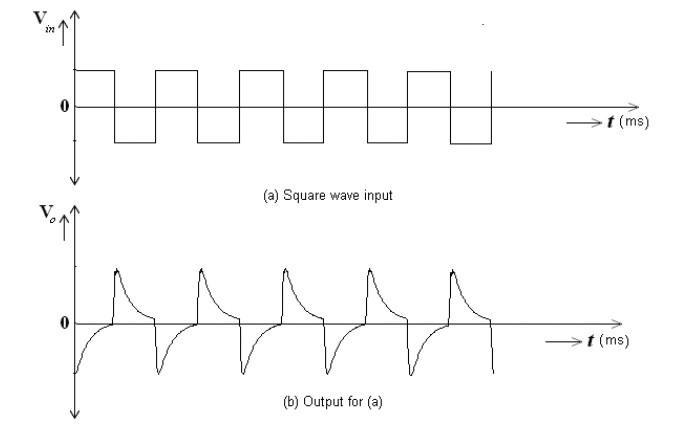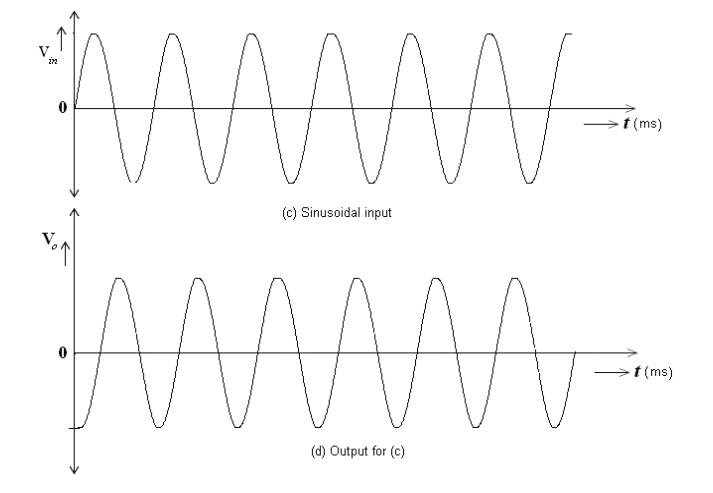Differentiator:
One of the simplest of the op-amp circuits that contains capacitor in the differentiating amplifier.
Differentiator:
As the name implies, the circuit performs the mathematical operation of differentiation (i.e) the output waveform is the derivative of the input waveform. The differentiator may be constructed from a basic inverting amplifier if an input resistor R1 is replaced by a capacitor C1 .
The expression for the output voltage can be obtained KCL eqn written at node V2 as follows,
Since the differentiator performs the reverse of the integrator function.
Thus the output V0 is equal to RF C1 times the negative rate of change of the input voltage Vin with time.
The –sign => indicates a 1800 phase shift of the output waveform V0 with respect to the input signal.
The below circuit will not do this because it has some practical problems.
The gain of the circuit (RF /XC1 )R with R in frequency at a rate of 20dB/decade. This makes the circuit unstable.
Also input impedance XC1 S with Rin frequency which makes the circuit very susceptible to high frequency noise.
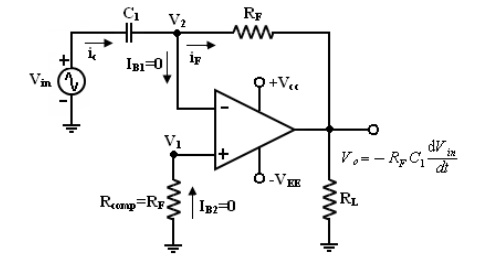
Basic Differetntiator
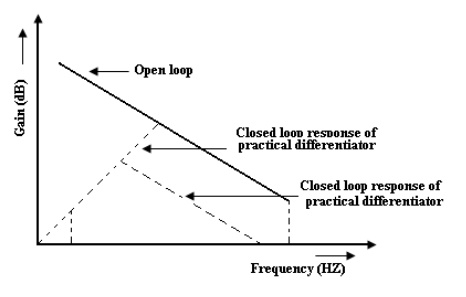
From the above fig, fa = frequency at which the gain is 0dB and is given by, Both stability and high frequency noise problems can be corrected by the addition of 2 components. R1 and CF . This circuit is a practical differentiator.
From Frequency f to feedback the gain Rs at 20dB/decade after feedback the gain S at 20dB/decade. This 40dB/ decade change in gain is caused by the R1 C1 and RF CF combinations. The gain limiting frequency fb is given by,
Where R1 C1 = RF CF
R1 C1 and RF CF => helps to reduce the effect of high frequency input, amplifier noise and offsets.
All R1 C1 and RF CF make the circuit more stable by preventing the Rin gain with frequency.
Generally, the value of Feedback and in turn R1 C1 and RF CF values should be selected such that
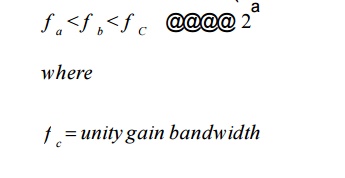
The input signal will be differentiated properly, if the time period T of the input signal is larger than or equal to RF C1 (i.e) T > RF C1

Practical Differentiator
A workable differentiator can be designed by implementing the following steps.
1. Select fa equal to the highest frequency of the input signal to be differentiated then assuming a value of C1< 1μf. Calculate the value of RF .
2. Choose fb = 20fa and calculate the values of R1 and CF so that R1 C1 = RFCF .
Uses:
Its used in waveshaping circuits to detect high frequency components in an input signal and also as a rate of change and detector in FM modulators.
This o/p for practical differentiator
